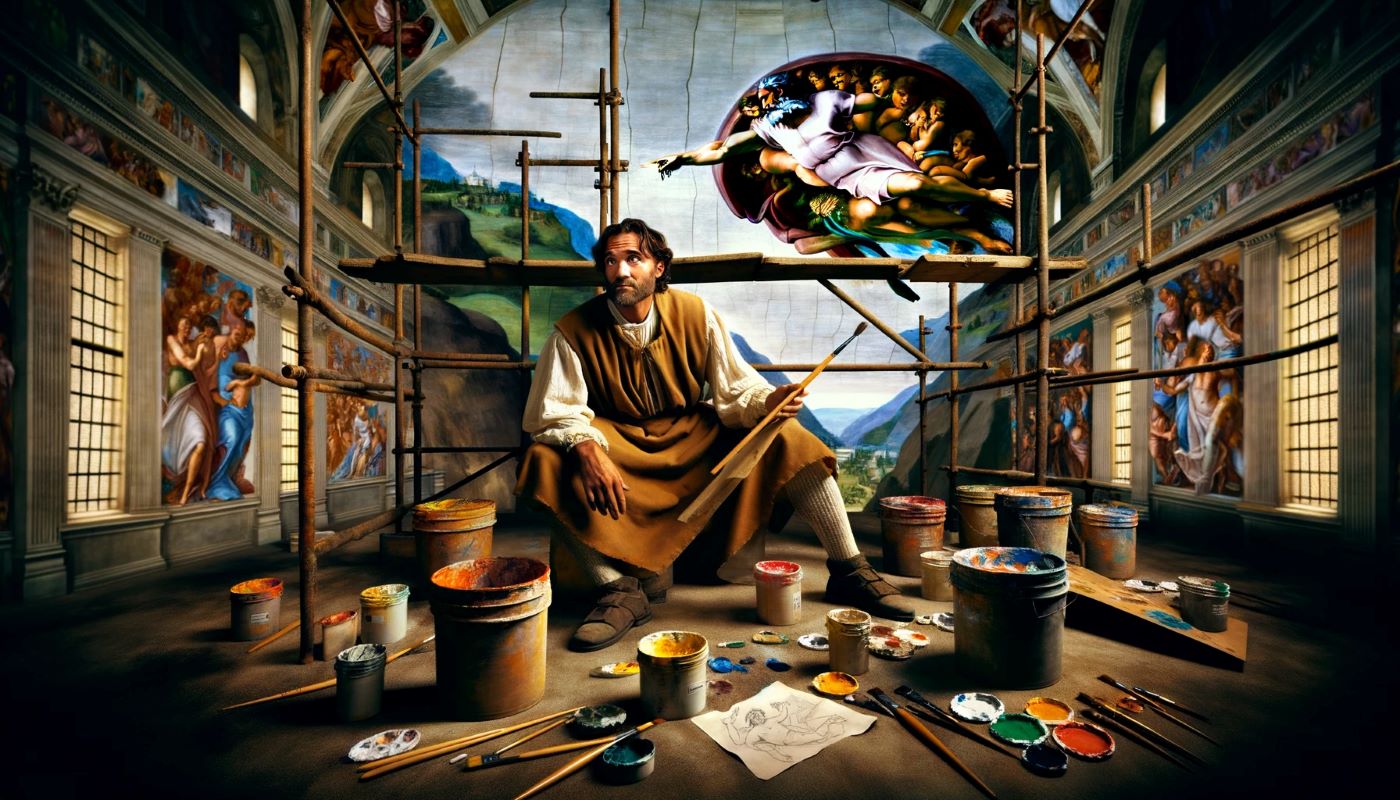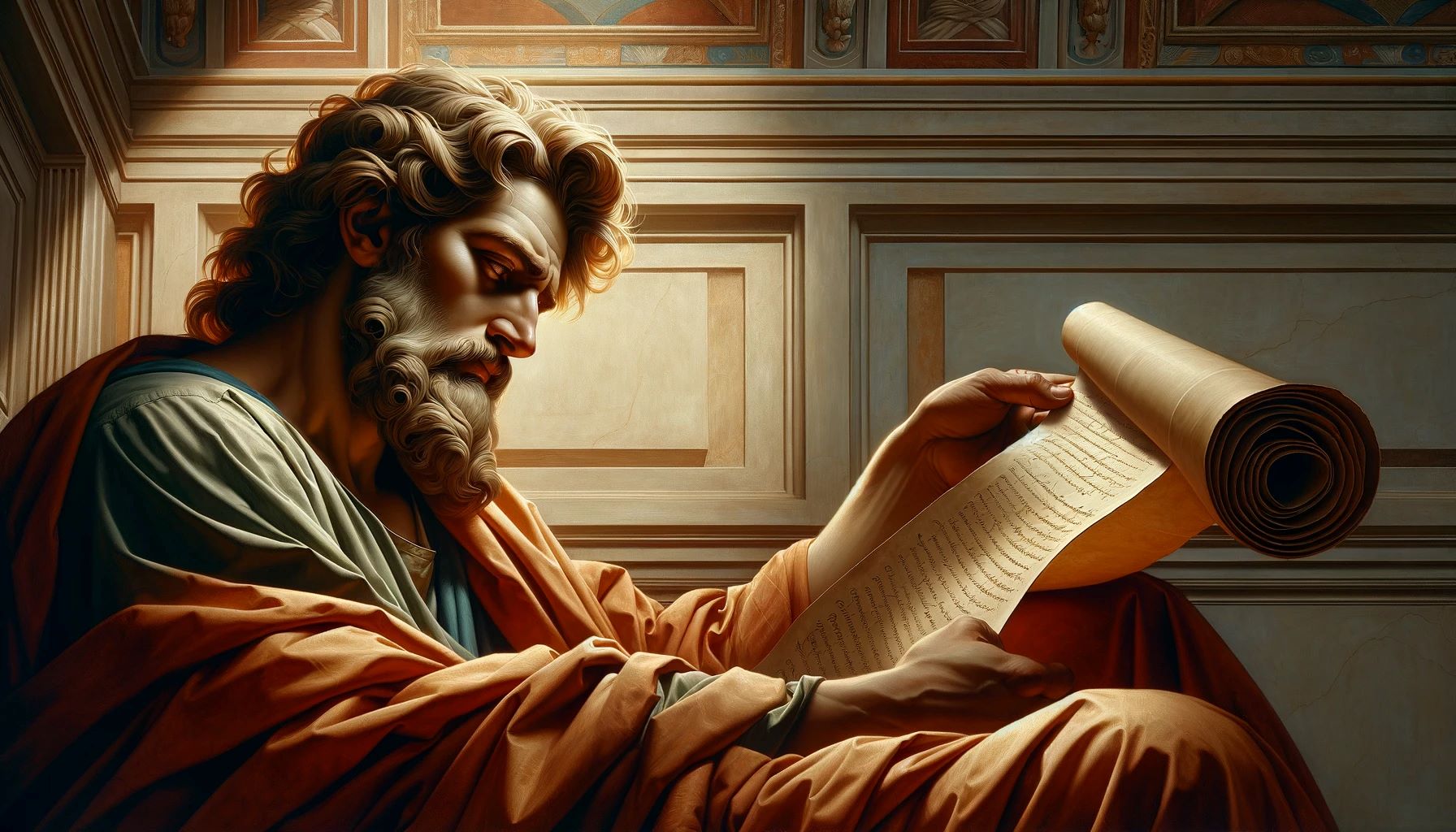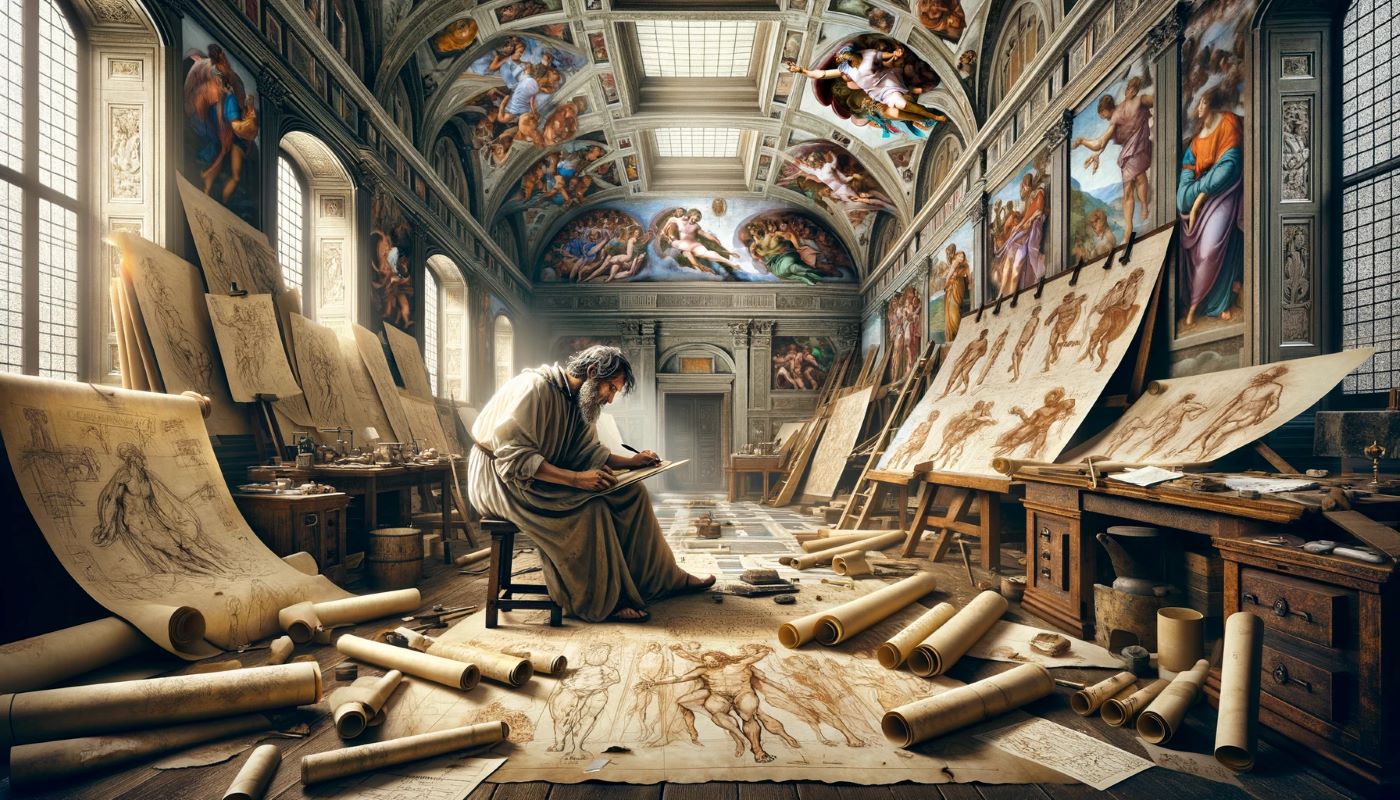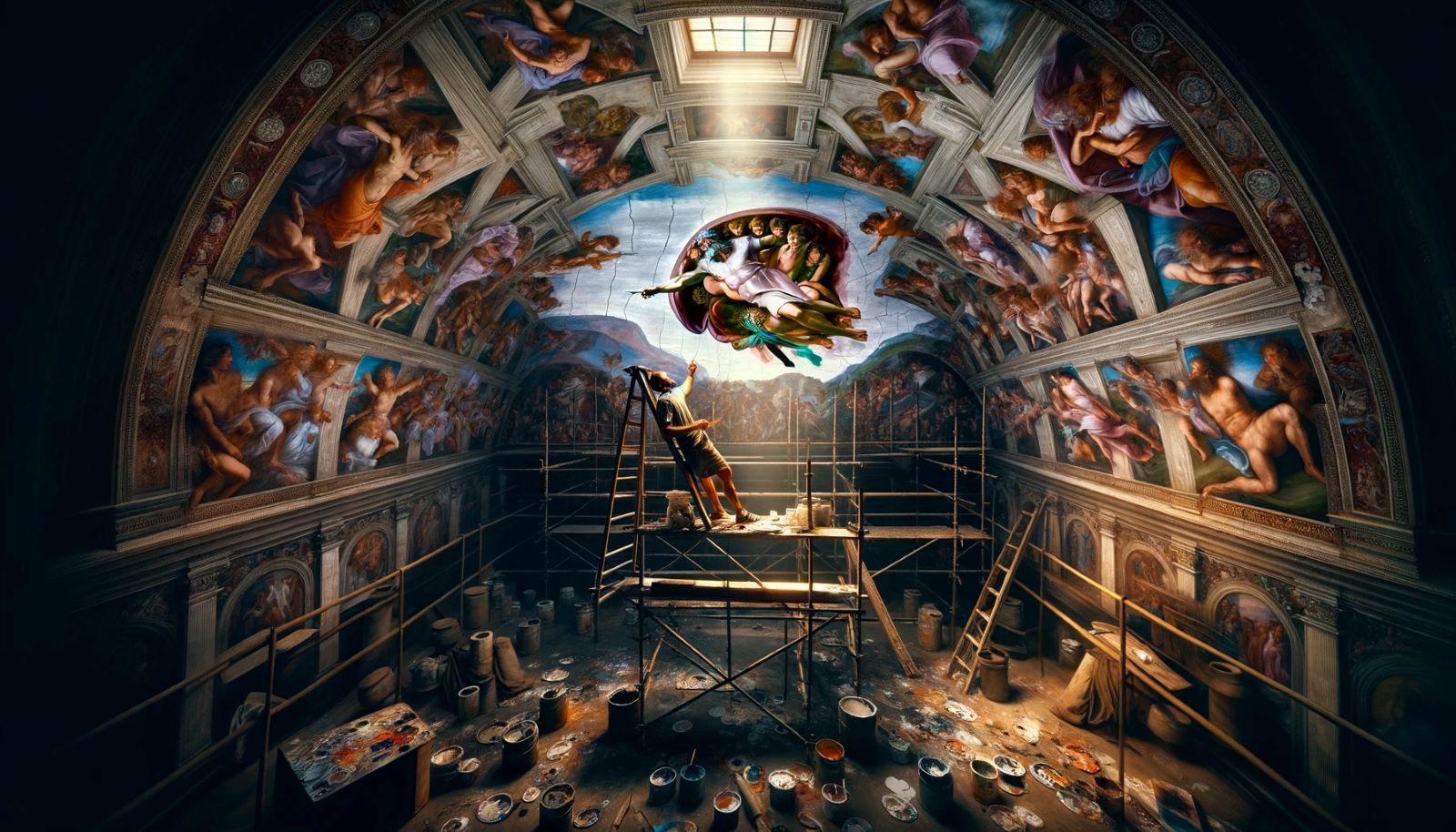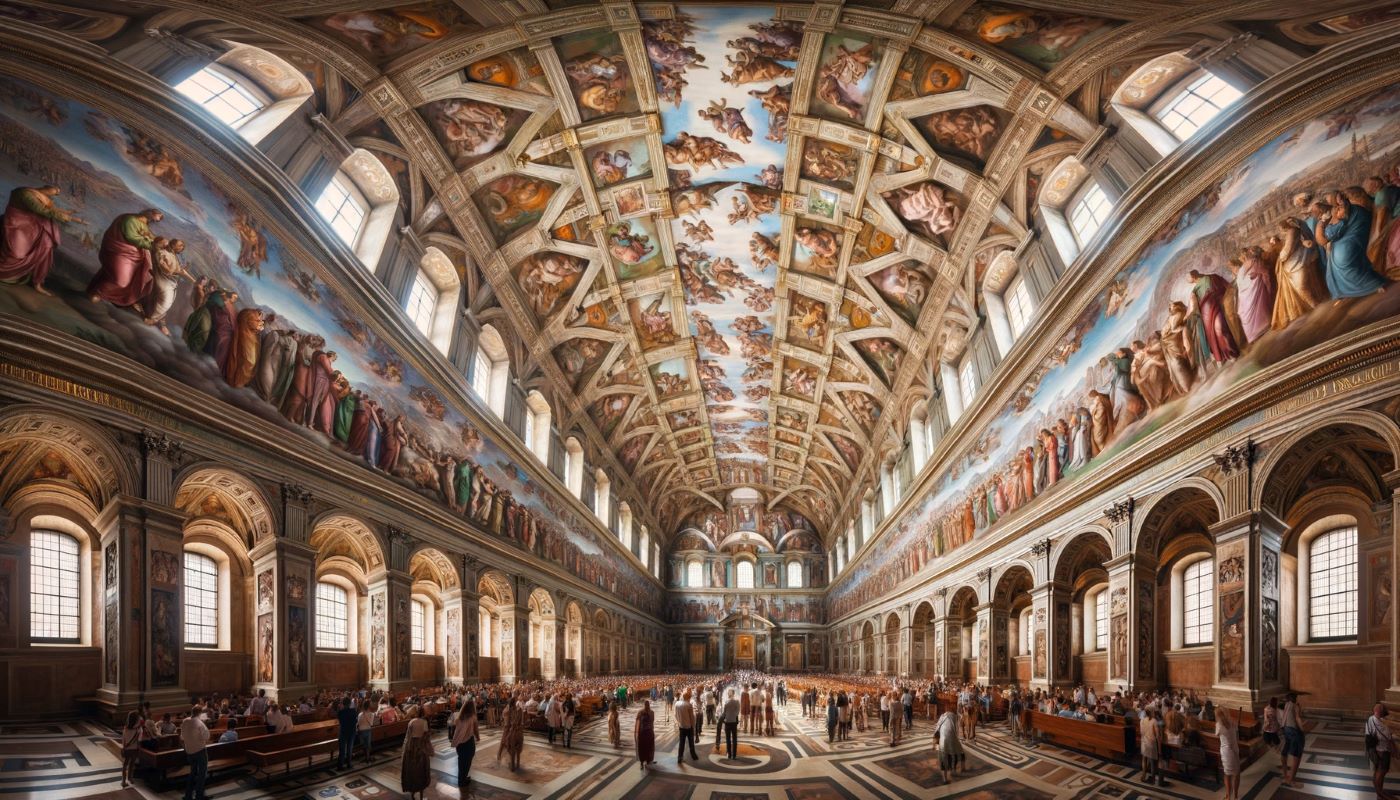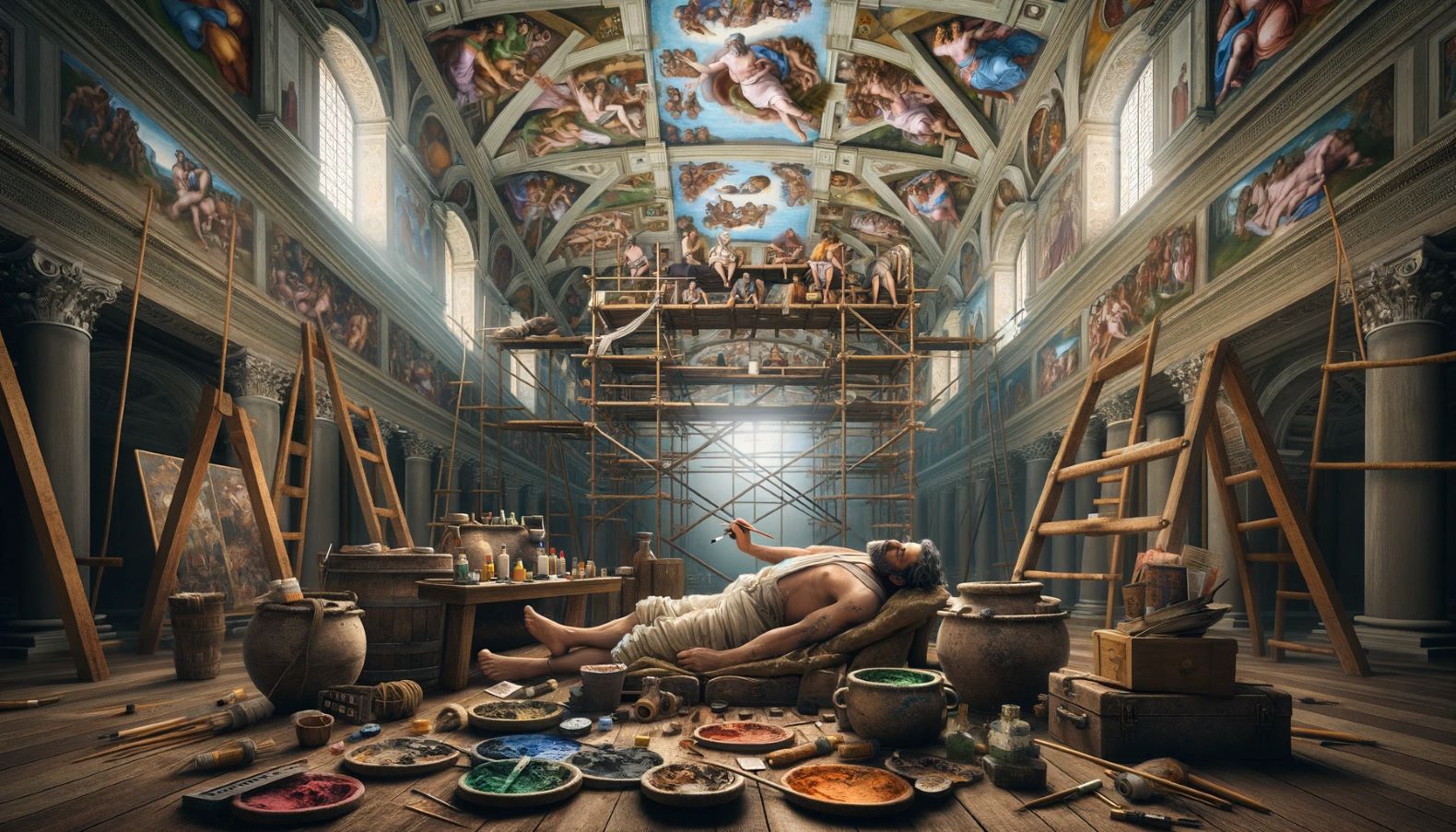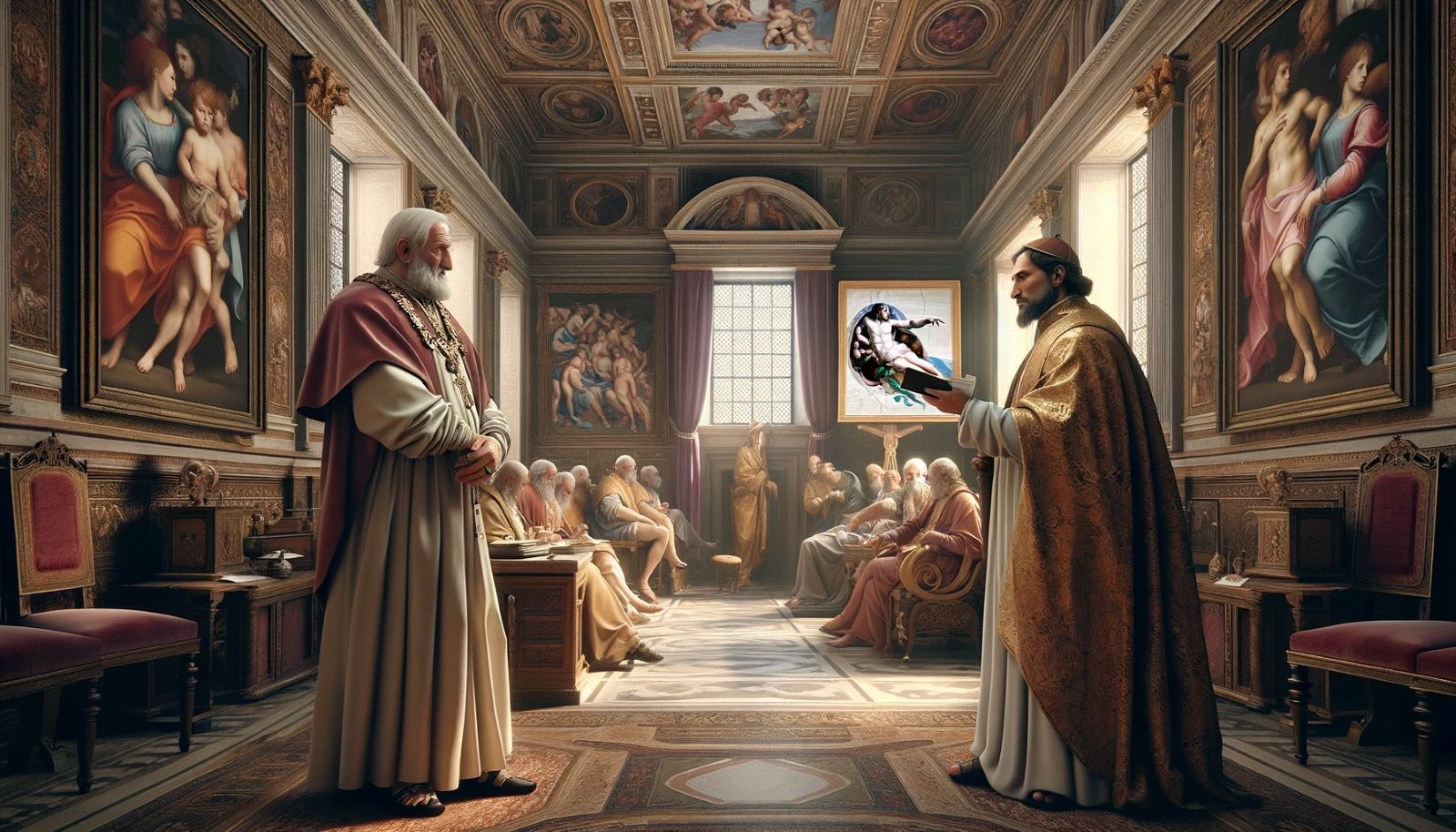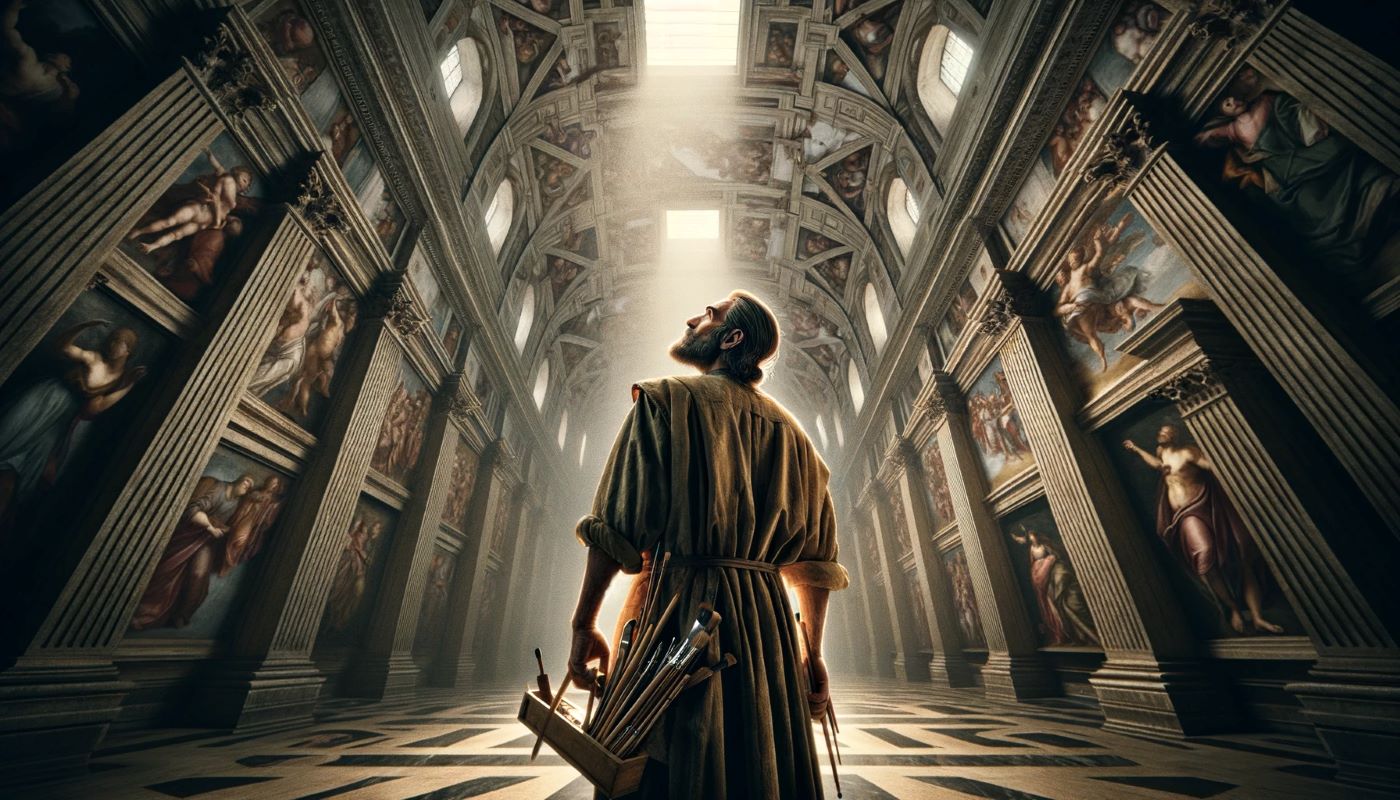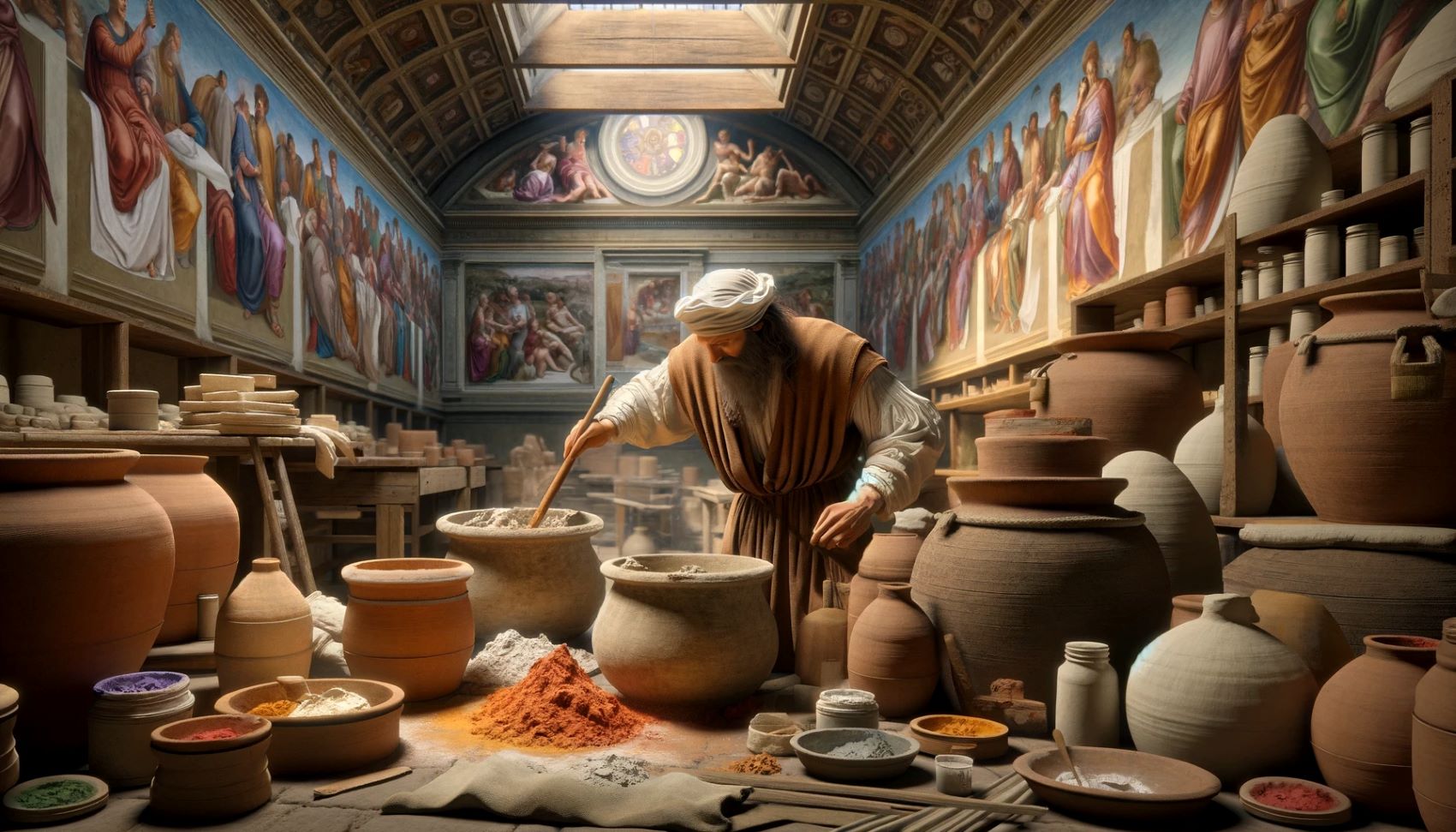Home>Arts and Culture>How Are The Sistine Chapel Paintings Arranged?
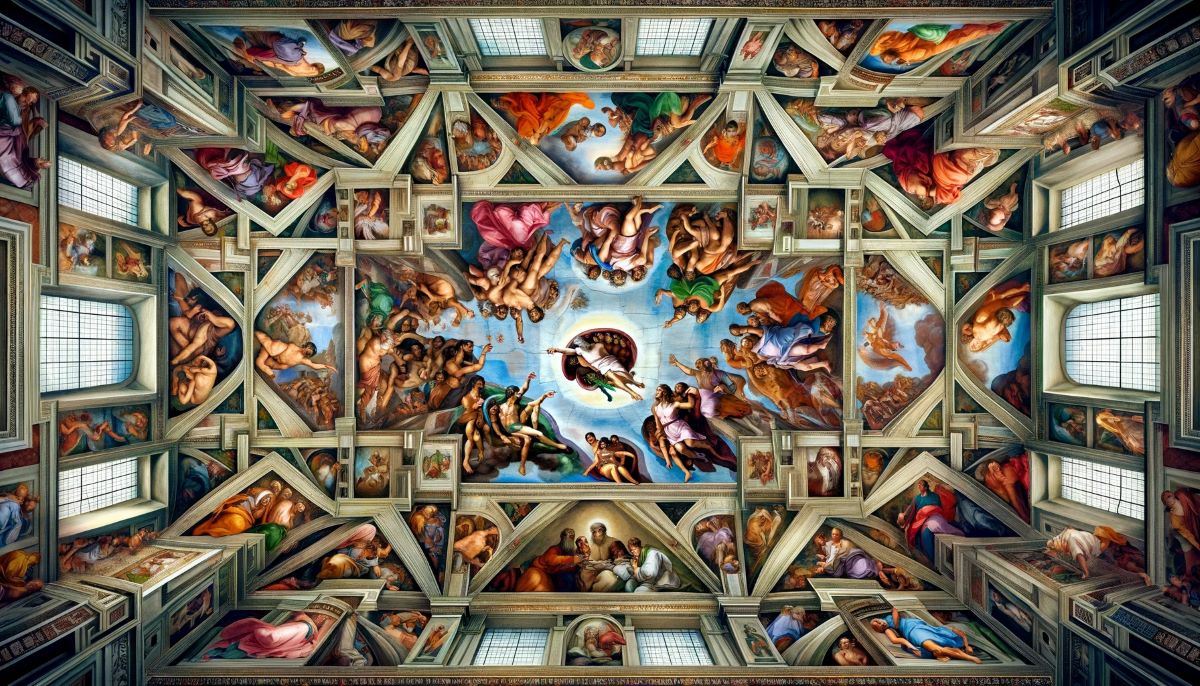

Arts and Culture
How Are The Sistine Chapel Paintings Arranged?
Published: March 4, 2024
Peter Smith, Editorial Director at Christian.net, combines deep insights into faith, politics, and culture to lead content creation that resonates widely. Awarded for his contributions to religious discourse, he previously headed a major organization for religious communicators, enhancing dialogue on faith's societal impacts.
Discover the arrangement of Sistine Chapel paintings and explore the rich history of arts and culture. Uncover the masterpieces and their significance in this iconic cultural site.
(Many of the links in this article redirect to a specific reviewed product. Your purchase of these products through affiliate links helps to generate commission for Christian.net, at no extra cost. Learn more)
Table of Contents
Introduction
The Sistine Chapel, located in Vatican City, is renowned for its stunning frescoes painted by the legendary artist Michelangelo. The chapel's ceiling and altar wall are adorned with breathtaking paintings that depict various scenes from the Bible. The arrangement of these paintings is not random; rather, it follows a deliberate and meaningful sequence that tells a cohesive story. Understanding how the Sistine Chapel paintings are arranged provides insight into the narrative and symbolism behind Michelangelo's masterpiece. Let's delve into the arrangement of these iconic artworks and unravel the rich tapestry of religious imagery they convey.
The Creation of Adam
The Creation of Adam is one of the most famous and iconic frescoes within the Sistine Chapel. This masterpiece portrays the biblical story of God breathing life into Adam, the first man. The painting is located at the center of the chapel's ceiling, emphasizing its significance in the overall arrangement. The composition captures the pivotal moment of divine creation, with the outstretched hands of God and Adam almost touching, symbolizing the transmission of life and the spark of humanity. The emotional and spiritual intensity of this scene is palpable, as it encapsulates the profound connection between the Creator and His creation. Michelangelo's portrayal of this sacred event is a testament to his unparalleled artistic skill and his ability to imbue the scene with profound theological meaning.
- The central placement of The Creation of Adam underscores its thematic importance in the narrative of the chapel's ceiling paintings.
- The dynamic and powerful depiction of God and Adam reaching towards each other conveys the spiritual significance of this pivotal moment in religious history.
- The intricate details and emotive expressions in the fresco exemplify Michelangelo's mastery in capturing the depth of human experience and divine intervention.
The Creation of Adam serves as a focal point within the Sistine Chapel, drawing visitors into the heart of the biblical narrative and inviting contemplation on the profound theological themes it embodies.
The Last Judgment
The Last Judgment is a monumental fresco adorning the altar wall of the Sistine Chapel, serving as the culmination of Michelangelo's artistic vision within this sacred space. This awe-inspiring masterpiece depicts the apocalyptic scene of divine judgment, with Christ at the center, surrounded by saints, angels, and the souls of the resurrected. The composition is a vivid portrayal of the final reckoning, where the righteous ascend to heaven and the damned are consigned to eternal damnation. The sheer scale and intensity of the painting convey the gravity of this eschatological event, evoking a profound sense of awe and contemplation. Michelangelo's masterful depiction of The Last Judgment stands as a testament to his unparalleled skill in capturing the complexities of human emotion and the theological significance of this pivotal moment in Christian eschatology.
- The Last Judgment serves as the climactic centerpiece of the Sistine Chapel's interior, encapsulating the theme of divine judgment and salvation.
- The dynamic and emotive portrayal of Christ and the multitude of figures conveys the gravity of the apocalyptic narrative, inviting viewers to reflect on the eternal consequences of their actions.
- The intricate details and expressive forms within the fresco exemplify Michelangelo's ability to convey the spiritual and emotional dimensions of the Last Judgment, leaving an indelible impression on all who behold it.
The Last Judgment stands as a testament to Michelangelo's enduring legacy and his profound impact on the intersection of art and religious expression.
The Deluge
The Deluge, also known as The Great Flood, is a compelling fresco located on the ceiling of the Sistine Chapel. This dramatic depiction portrays the biblical narrative of the worldwide flood, as described in the book of Genesis. The scene captures the tumultuous and cataclysmic event of divine judgment, where the earth is engulfed by the waters of the flood, sparing only Noah, his family, and the selected animals aboard the ark. Michelangelo's masterful rendition of this harrowing episode conveys the sheer magnitude of the deluge, with swirling waters and tumultuous waves engulfing the doomed world below. The emotional intensity and dramatic composition of The Deluge serve as a poignant reminder of the consequences of human disobedience and the redemptive power of divine mercy. This powerful fresco not only showcases Michelangelo's artistic prowess but also invites contemplation on the profound theological themes of judgment, salvation, and the enduring covenant between God and humanity.
- The Deluge captures the catastrophic event of the Great Flood, emphasizing the divine judgment and the preservation of life through Noah and the ark.
- The dynamic and tumultuous portrayal of the floodwaters conveys the magnitude of the cataclysmic event, evoking a sense of awe and reverence for the biblical narrative.
- The intricate details and emotive expressions within the fresco exemplify Michelangelo's ability to convey the emotional and spiritual dimensions of the Deluge, leaving a lasting impression on viewers.
The Deluge stands as a testament to Michelangelo's unparalleled ability to breathe life and depth into biblical narratives, inviting viewers to engage with the profound themes of divine judgment and redemption.
The Fall of Man
The Fall of Man, also known as the Expulsion from the Garden of Eden, is a poignant fresco located on the ceiling of the Sistine Chapel. This compelling depiction portrays the biblical narrative of Adam and Eve's expulsion from the Garden of Eden, as a consequence of their disobedience and partaking of the forbidden fruit. The scene captures the moment of profound loss and divine judgment, as Adam and Eve are banished from paradise, their expressions reflecting the anguish and realization of their transgression. Michelangelo's masterful rendition of this pivotal event conveys the emotional and spiritual turmoil of the Fall, with the angelic figures and the swirling cherubs encapsulating the gravity of the expulsion. The intricate details and emotive expressions within the fresco exemplify Michelangelo's ability to convey the depth of human experience and the theological significance of the Fall of Man, leaving an indelible impression on all who behold it.
- The Fall of Man captures the pivotal moment of Adam and Eve's expulsion from the Garden of Eden, emphasizing the consequences of disobedience and the loss of paradise.
- The emotive portrayal of Adam and Eve's anguish conveys the profound emotional and spiritual turmoil of their expulsion, inviting viewers to contemplate the consequences of sin and divine judgment.
- The intricate details and expressive forms within the fresco exemplify Michelangelo's mastery in capturing the depth of human experience and the theological significance of the Fall of Man, leaving a lasting impression on all who behold it.
The Ceiling Panels
The ceiling of the Sistine Chapel is adorned with a series of nine intricately painted panels, each depicting significant scenes from the Book of Genesis. These panels are arranged in a sequential order, unfolding a visual narrative of creation, humanity, and divine intervention. Michelangelo's masterful brushstrokes bring to life iconic moments such as the creation of light, the separation of land and water, the creation of Adam and Eve, and the expulsion from the Garden of Eden. The arrangement of the ceiling panels follows a deliberate progression, beginning with the creation of the cosmos and culminating in the story of Noah and the Great Flood. Each panel seamlessly flows into the next, creating a cohesive and visually stunning portrayal of the biblical account of creation and early human history.
- The ceiling panels form a continuous visual narrative, capturing pivotal moments from the Book of Genesis and emphasizing the interconnectedness of divine creation and human experience.
- Michelangelo’s meticulous attention to detail and emotive portrayal of each scene imbue the ceiling panels with a profound sense of spiritual and theological significance.
- The sequential arrangement of the panels invites viewers to engage with the unfolding story of creation, prompting contemplation on the timeless themes of divine providence, human fallibility, and the enduring covenant between God and humanity.
The Lunettes
The lunettes of the Sistine Chapel are semicircular spaces located above the windows, adorned with captivating frescoes that depict significant events from the Old Testament. These exquisite paintings, executed by Michelangelo and his workshop, enrich the visual tapestry of the chapel with their compelling narratives and emotive compositions. The lunettes feature scenes such as the ancestors of Christ, the stories of Noah, Abraham, David, and other prominent figures from biblical history. Each lunette serves as a visual tableau, capturing the essence of these pivotal narratives and infusing the chapel with a profound sense of sacred history. The arrangement of the lunettes creates a harmonious interplay between the ceiling panels and the altar wall, uniting the overarching themes of creation, redemption, and divine providence within the sacred space of the Sistine Chapel.
- The lunettes enrich the visual narrative of the chapel, portraying significant events and figures from the Old Testament with emotive compositions and compelling storytelling.
- The arrangement of the lunettes creates a cohesive link between the ceiling panels and the altar wall, uniting the overarching themes of creation, redemption, and divine providence within the sacred space of the Sistine Chapel.
- Each lunette serves as a visual tableau, capturing the essence of pivotal narratives from biblical history and infusing the chapel with a profound sense of sacred heritage.
The Altar Wall
The altar wall of the Sistine Chapel is adorned with one of Michelangelo's most iconic and monumental frescoes, The Last Judgment. This awe-inspiring masterpiece serves as the focal point of the chapel's interior, commanding the attention of all who enter the sacred space. The composition depicts the apocalyptic scene of divine judgment, with Christ at the center, surrounded by saints, angels, and the souls of the resurrected. The sheer scale and intensity of the painting convey the gravity of this eschatological event, evoking a profound sense of awe and contemplation. The Last Judgment stands as the culmination of Michelangelo's artistic vision within the chapel, encapsulating the theme of divine judgment and salvation. The dynamic and emotive portrayal of Christ and the multitude of figures conveys the gravity of the apocalyptic narrative, inviting viewers to reflect on the eternal consequences of their actions. The intricate details and expressive forms within the fresco exemplify Michelangelo's ability to convey the spiritual and emotional dimensions of the Last Judgment, leaving an indelible impression on all who behold it. The altar wall, adorned with The Last Judgment, serves as a testament to Michelangelo's enduring legacy and his profound impact on the intersection of art and religious expression.
